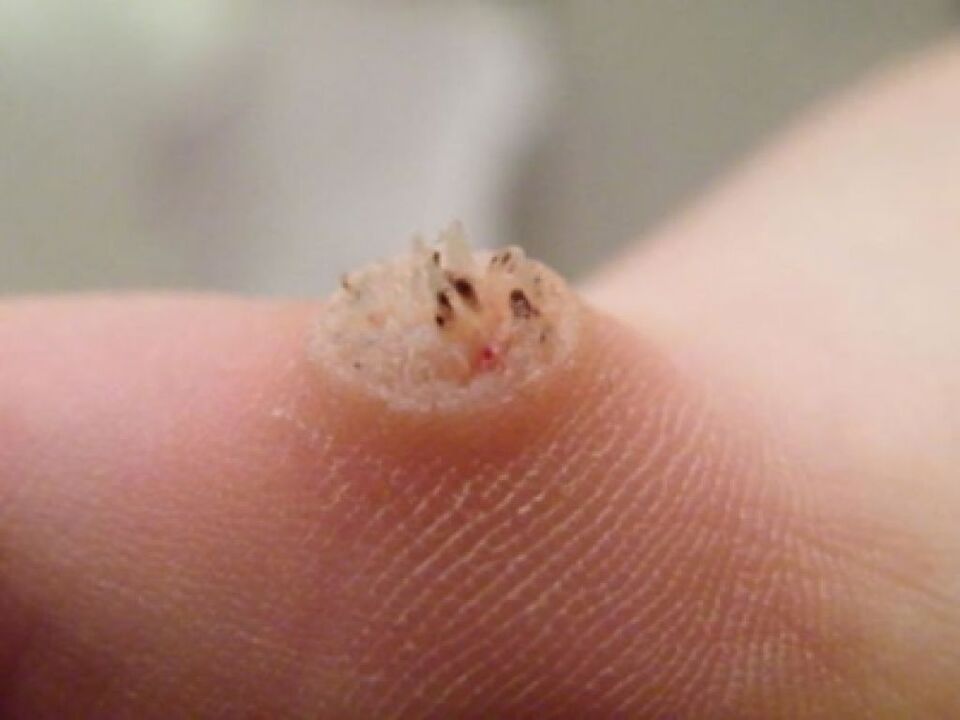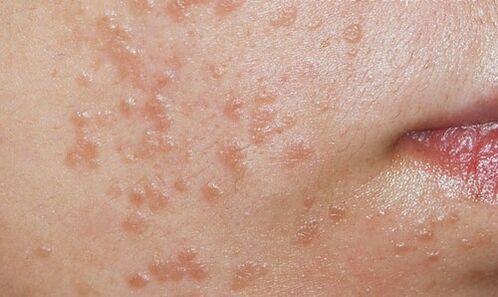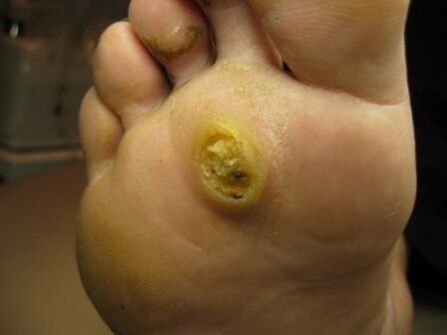In general, it is necessary for everyone to consider the types that are closer to papilloma. This information will be useful because some types of warts have very high carcinogenic levels and people can consult a doctor immediately if they appear on the body.
Each type of tumor has its own unique external characteristics, and it is worth learning more about them.
Common or vulgar warts - description
The carriers of papillomavirus are 90% of the inhabitants of the earth. For some people, it may be inactive for life, but some people can't get rid of warts. In most cases, on the skin, you can see the common papilloma, which is made up of variouscaused by viral organisms.

Common-type papilloma manifests in humans due to the following external features:
- The shape is round or hemispheric;
- The color is slightly darker than flesh-colored or brown;
- 2-4 mm above the skin;
- The structure is uniform and smooth, and the texture is soft;
- Thanks to a special leg attached to the human body.
Such problems can occur in the arms, legs, back, face and neck. Some people confuse this benign formation with a mole, but in reality, the two concepts are quite different.
Such a problem does not have any obvious symptoms; this type of wart has very low carcinogenicity and does not need to be removed. If a person wishes, he can remove the growth by using laser therapy, freezing with liquid nitrogen, special plasters or standard surgical intervention.
Description of Filiform Warts
Various papillomas can tell you exactly which genotype of the viral organism is causing the problem. Many times, filiform warts can be found on the neck or facial area. They are small enough to sit on long legs and cause little discomfort. The characteristics of this particular type of papilloma should be called:
- very small, almost very small;
- The legs are long and thin, like a thread;
- fleshy or light brown;
- Quite soft and pleasant structure.
Filamentous warts can appear on the eyelids, neck, and near the mouth. If they were growing on another part of the body, there would be no surprise here, as HPV looked completely unexpected. Filiform papillomas are also known as anronorades, and doctors do not give clear recommendations for their removal. When this particular type of problem occurs, there is no explicit recommendation for deletion.
Flat papilloma - main features

Flat warts are a fairly common type of papilloma that most often develop at a young age.
On the body of adolescents, small flat warts are observed that disappear on their own over time.
Flat tumors are also more likely to appear at a more mature age because the problem is caused by the virus strains numbered 43, 55, 53, etc.
From the looks of it, this problem has the following characteristics:
- Does not actually protrude above skin level or is very small in height;
- flesh-colored or light brown;
- Most often occurs in a single variant;
- Does not cause any discomfort and may come in minimal or rather large sizes.
Such problems only cause visual discomfort, as they do not cause any particular problems that require attention. A doctor may prescribe antiviral treatment, which is caused by taking antiviral drugs. If a person experiences visual discomfort in the presence of a flat wart, then the papilloma can be surgically removed by laser or cold cautery.
sharp papilloma or wart
The most dangerous to humans is cuspid papilloma. They are caused by viral organisms numbered 31, 33, 35, 39, 45, 51, 59, 70, 30, 39, 55, 57, 67, 69. These structures have very high carcinogenic levels and are most often found in the areas of intimate men and women.
External features of condyloma acuminatum due to the activity of human papillomavirus are considered to be:
- Conical growth, different sizes;
- A fairly high rise above the skin level;
- The presence of warts is not a single variant;
- A large number of papillomas forming a structure very similar in appearance to cauliflower;
- Educating not only the skin, but also the mucous membranes;
- Fleshy, light brown or pink.
The presence of these growths in intimate areas can cause a lot of discomfort. A person often experiences itching, is uncomfortable in intimate relationships, and may have a less than pleasant smell.
If a problem is found in a woman, then she will be offered to be screened. Treatment of the problem will depend directly on the specific diagnosis made by the doctor. If the formation has become malignant, surgery is performed, chemotherapy is used. While refuting such a serious diagnosis, the patient is still advised to remove the growth and go on antiviral therapy.
Plantar warts - main features

Some HPV genotypes can cause warts on the soles and palms of the feet. They are usually similar to regular corn, but very painful. The main features of this type of problem pattern should be referred to as the following external manifestations:
- In color, growth is practically indistinguishable from skin color;
- slightly above skin level;
- Usually resembles a nodule on the leg and has some mobility.
Growing discomfort is only because they appear in such an area. It is painful for a person to fully step on the foot due to over-education, and if the papilloma is on the arm, there is a lot of discomfort during some kind of robotic performance. These growths must be removed because they are easily damaged, which often leads to blood poisoning.
Plantar warts have low carcinogenic levels, but they are very dangerous because they are easily damaged without noticing. Encountering such problems, it is necessary to carry out antiviral treatment, surgical removal of growths with laser or liquid nitrogen. After the surgery, there was still a small wound, but it healed completely within a few days.
Basal papillomas and senile warts
Some papillomas only occur in people of a certain age. These types of benign growths include basal papilloma. This tumor is also considered a senile wart (pictured).

In terms of appearance, this benign growth can be described as follows:
- The color is practically indistinguishable from the standard color of the skin;
- fairly soft structure;
- slightly above skin level;
- Changes in size - quite large or small papillomas.
This wart poses no danger. They cannot be removed, but patients can always choose the type of treatment that is most comfortable for themselves if needed. This type of papilloma is difficult to see in photos, but in real life, they are clearly visible on external examination.
Additional Information
In nature, there are about 150 types of papillomaviruses that cause warts of all shapes and sizes on the skin. Papillomas are divided into several types based on the strain of HPV that a person infects.
People only develop warts of all types and sizes when they are greatly weakened, and if they notice such formations on the skin, it is worth remembering and considering the following information:
- Aggregated papillomas or warts are always at high risk;
- When warts appear on the soles, mucous membranes and palms of the feet, even if they are safe varieties, they should be removed resolutely;
- You shouldn't try to remove every type of wart yourself, as this can come back and infect your entire body.
Everyone's body has its own characteristics, which also affects how HPV presents itself.
If a person notices a wart of a certain type on the body with a description similar to one of the varieties indicated, then you should consult a doctor immediately.
When education doesn't fit the description above, it shouldn't be ignored either, as it can all be caused by HPV.
Why does almost everyone have this problem? Experienced physicians have not yet been able to identify in detail, but experts have learned how to competently treat external manifestations and the root cause of the problem. The external problems of each breed are opportunities to visit a medical professional. You can't ignore this because everything can end very seriously.
in custody
So if a person has common or flat warts, then he need not be afraid at all, but sharp growths do not always turn out to be benign, which is the reason for additional diagnosis and immediate treatment.
Senile warts also don't manifest in any way, and are usually not caused by HPV, but only develop due to age. Flat papilloma can become an age-related feature of adolescents and then disappear without a trace.
But you shouldn't count on that as the problem could be more serious. It's best to go to a qualified specialist right away and solve the problem proficiently to avoid extra trouble later.
Of all types of warts, there are tumors that are completely safe and tumors that can cause significant health damage. Both of these problems require a competent diagnosis before a doctor can decide what to do in a given situation. Everyone can learn to recognize the variety of problems, but there is no point in trying to solve problems on their own.























